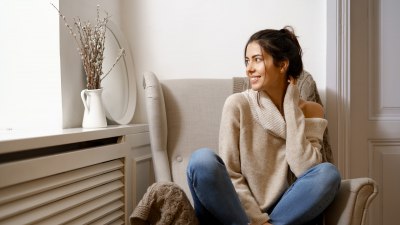How Changing Temperatures Affect Your Morning Routine
Discover how temperature changes can impact your morning routine and tips to adapt effectively.

As seasons shift, so do the temperatures that influence our daily lives. For many, a morning routine sets the tone for the entire day. However, fluctuating temperatures can play a significant role in how we start each day, impacting everything from our wake-up time to the types of food we consume. Understanding these effects can help you optimize your morning routine and embrace seasonal changes more effectively.
Understanding Temperature Changes
Temperature changes occur due to seasonal variations, geographical location, and weather patterns. In winter, cold temperatures can make mornings feel sluggish and uninviting, while summer heat can lead to early rising and a desire to be outdoors. Spring and fall present transitional temperatures, often bringing their own set of challenges and opportunities.
Impact on Sleep Quality
One of the most significant ways temperature affects your morning routine is through sleep quality. Studies suggest that the ideal sleeping temperature for most people is between 60 and 67 degrees Fahrenheit (15 to 19 degrees Celsius). If it’s too hot or too cold, sleep quality may deteriorate. This can result in waking up tired, which impacts your ability to be productive in the morning.
For those living in warmer climates, sleeping with air conditioning or fans can combat the heat but may also lead to dry air, which can affect respiratory health. Conversely, in colder areas, heating systems can sometimes be too effective, making rooms overly warm and contributing to restless sleep. Having a consistent sleep routine is essential to mitigate such issues.
Morning Motivation
The temperature can significantly influence your motivation levels upon waking. Cold, dark winter mornings can lead to a desire to remain snuggled under the covers, whereas bright, warm summer mornings often instigate an eagerness to get up and seize the day. Your body’s circadian rhythm plays a role here, with colder mornings causing a natural desire to hibernate. Conversely, warm temperatures can encourage outdoor activities early in the day.
Increasing morning brightness through natural light exposure can help combat this issue. Consider making adjustments to your curtains or using light therapy lamps during darker seasons to improve motivation and ensure a more vibrant start to your day.
Nutrition and Temperature
Temperature influences not only how we feel but also what we crave. In colder months, heavier, warming foods such as oatmeal and hot beverages often become staples in the breakfast routine. The body craves warmth, and people tend to gravitate toward comfort foods that provide that. In contrast, summer mornings might lead you to lighter options such as smoothies, yogurt, or fruit-filled meals to stay refreshed and hydrated.
It’s essential to adapt your nutrition to align with the season's demands. Emphasizing seasonal produce and local foods allows you to stay in tune with nature, enhancing both your dietary intake and overall health. Being mindful of hydration is crucial; warmer temperatures require you to increase water intake, whereas colder days might see a decrease in thirst.
Exercise Timing and Temperature
Temperature dictates not just what you eat, but also when and how you exercise. In warmer weather, many people prefer to exercise in the morning, taking advantage of the pleasant temperatures. Morning jogs or outdoor workouts can invigorate your day and promote mental clarity. However, during extreme heat, it’s essential to adjust workout times to avoid peak heat hours and prevent dehydration and exhaustion.
Cold weather presents a different set of challenges, where outdoor activities may become less appealing. The need for layering and warming up becomes paramount. However, winter sports such as skiing or snowboarding can become excellent ways to enjoy the cold while also incorporating exercise into your routine. Staying indoors with workouts like yoga or pilates can also be beneficial during chilly mornings.
Adjusting Your Morning Schedule
As temperatures fluctuate, so should your morning schedule. Experimenting with wake-up times can allow you to maximize productivity. For instance, during warmer summer months, early morning wake-ups of 5 or 6 AM can utilize cooler temperatures, promoting more energetic starts. In colder months, allowing yourself a little extra sleep may be beneficial, making it easier to rise without the impact of biting cold.
Automating certain tasks, such as setting your coffee maker to brew before you wake up or pre-prepping your breakfast the night before, can also help streamline your mornings irrespective of the season. This organization can reduce stress and help you focus on the tasks that reignite your passion for starting each day.
Creating a Cozy Environment
Regardless of external temperatures, creating a consistent and cozy morning routine can help counteract discomfort caused by seasonal changes. Adding tactile elements like soft blankets, warm colors, or a favorite warm beverage can provide comfort. An inviting environment can be a strong motivator to embrace the morning routine fully, regardless of whether it's bitterly cold or swelteringly hot.
Temperature undoubtedly has a profound effect on your morning routine, influencing everything from sleep and motivation to nutrition and exercise. By understanding these effects and adapting your habits accordingly, you can cultivate a morning routine that not only protects your well-being but also empowers you to face the day ahead with enthusiasm. Whether it’s finding ways to warm up in winter or cooling down in the summer, the key is adaptability. As temperatures change, so too can your routine, allowing you to thrive, no matter what the weather brings.











